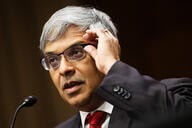You have /5 articles left.
Sign up for a free account or log in.
Black student loan borrowers are twice as likely as white borrowers to be projected to never be able to pay off their student loan debt, a result of systemic inequities in society, finds a study by the JPMorgan Chase Institute.
About 13 percent of Black borrowers are projected to never be able to pay off their debt because they are not keeping up with their payments and their balances are increasing, said the study, which used nonidentified data from 301,583 Chase checking customers as well as Experian credit agency data. In comparison, 6.8 percent of white borrowers and 8.4 percent of Hispanics were projected to never be able to repay their loans.
The study found that the median annual amount paid by Black borrowers was $212 less than the $1,850 they were scheduled to pay, whereas white borrowers paid more than they were required to.
One likely cause, the study noted, is that the median income of Black student loan borrowers is approximately $12,500 lower, or 22 percent less, than the income of white student loan borrowers.
That implies that “Black borrowers may be experiencing financial circumstances that inhibit their means to make full scheduled payments,” the study found.
In addition, the study found that Black borrowers are less likely to get help from others in repaying their loans because their families and friends are less able to help than those of white families. “This issue is likely a major contributor to the different rates in loan repayment progress across race groups that we find below,” the study found.
The study also found that the impact of the student debt affects the nation more broadly than previously thought. It found that about 40 percent of those making student loan payments are making payments for somebody else.




